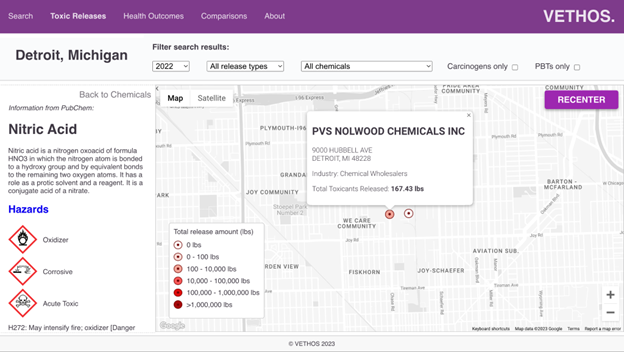Modern life has many beautiful amenities and conveniences, from cars to cell phones to packaged food. However, the creation of these amenities, especially in their mass production, includes the development of highly toxic synthetic chemicals -- such as PFAS, PCBs and others -- which do not timely decompose in the environment and accumulate in the human body. This mass production and industrial development consists in the processing and disposal of various natural and synthetic chemicals that can be highly problematic to life as they are disposed and accumulated on lands, air and water -- and in our organs, tissues and blood.
Given that these chemicals are largely invisible, and their disposal is often out of sight, people are unaware of the accumulation of toxicants in the environment, and their impacts on human, plant and animal life. Many diseases such as respiratory diseases, immune diseases and cancer are likely related to the various chemicals we release into the air, land and water, or consume directly from the products in our households and in our foods that are exposed to them.
To address some of these concerns, we have updated our open-source Visualizer of Environmental Toxicants web application, now calle dthe Visualizer of Environmental Health Risk: https://vehrs.lhei.org
The Visualizer of Environmental Health Risks (VEHRS) was developed to obtain information from the Toxic Releases Inventory (TRI)data of the U.S. Environmental Protection Agency, and associated chemical information from the PubChem database of the National Library of Medicine, to map, organize and visualize information about releases of toxic chemicals into the air, land and water across the United States. VEHRS updates the previous application by adding data from theNational Environmental Public Health Tracking database of the CDC

This tool was created to expand knowledge about environmental pollutants and enable the public, scientists and policymakers to learn about patterns of releases of toxic chemicals into the air, land and water over time, and how these releases may be affecting communities across the U.S.
Toxicity is a complex issue, and the hazards of a chemical are dependent on amount and concentration of the chemical, among other factors. This tool is thus for exploratory purposes only. To diagnose any particular disease on any a particular individual or community requires research and medical consultation. Further information and documentation about the variables used here are found under the TRI documentation, the PubChem website, and documentation from the EPH database.
VEHRS was conceptualized by Nic DePaula, who also guided the VEHRS development project. The application was developed Al-Taimee Hassan, Katherine O’Donnell, Amrita Dhar and Farzana Israt. VEHRS was built on initial developments made by Evan de Jesus, Adwait Wadekar, Richard Moore, and Calvin Brooks as part of their Senior Capstone Project at Wayne State University.

